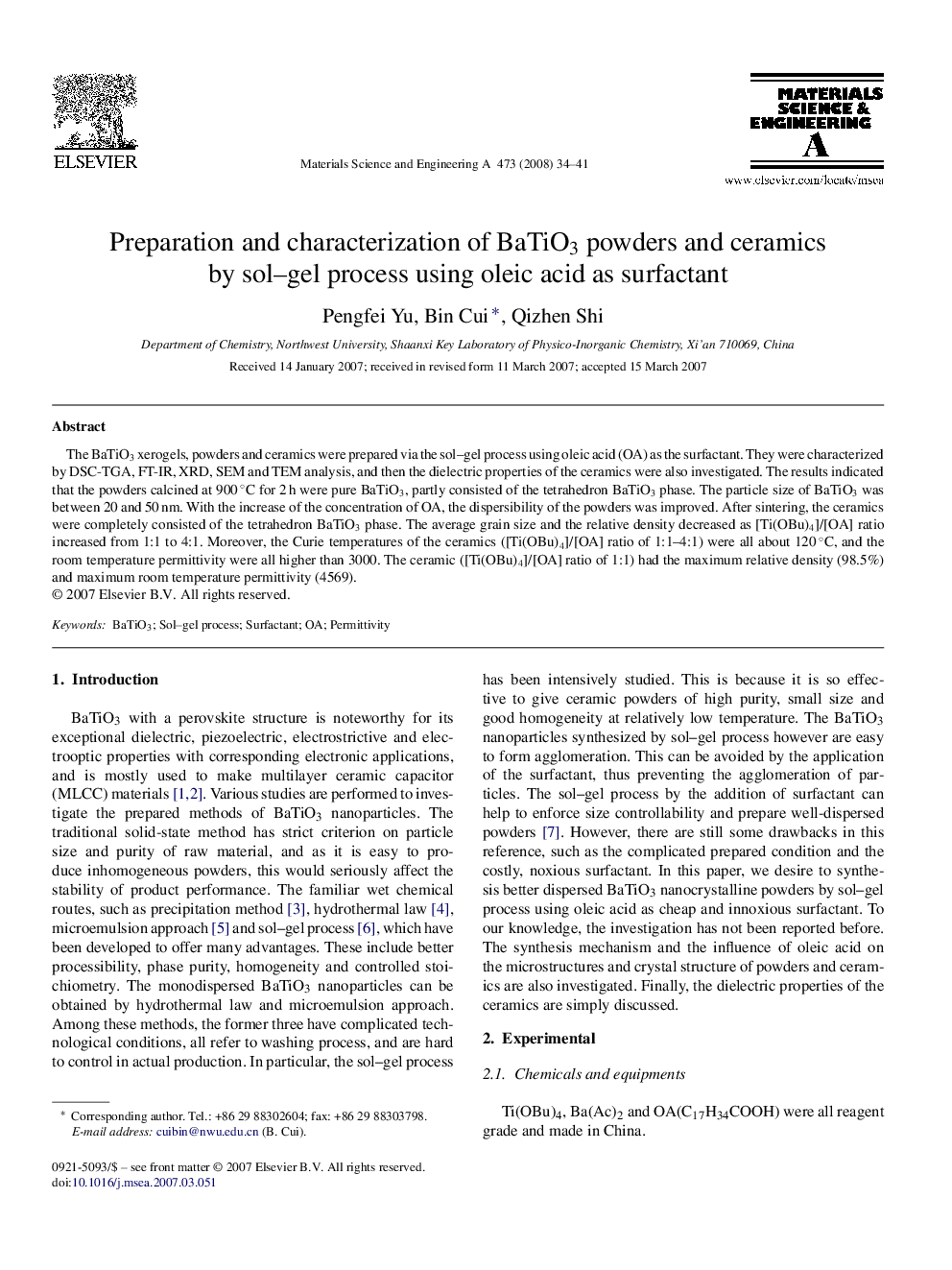| Article ID | Journal | Published Year | Pages | File Type |
|---|---|---|---|---|
| 1583224 | Materials Science and Engineering: A | 2008 | 8 Pages |
Abstract
The BaTiO3 xerogels, powders and ceramics were prepared via the sol-gel process using oleic acid (OA) as the surfactant. They were characterized by DSC-TGA, FT-IR, XRD, SEM and TEM analysis, and then the dielectric properties of the ceramics were also investigated. The results indicated that the powders calcined at 900 °C for 2 h were pure BaTiO3, partly consisted of the tetrahedron BaTiO3 phase. The particle size of BaTiO3 was between 20 and 50 nm. With the increase of the concentration of OA, the dispersibility of the powders was improved. After sintering, the ceramics were completely consisted of the tetrahedron BaTiO3 phase. The average grain size and the relative density decreased as [Ti(OBu)4]/[OA] ratio increased from 1:1 to 4:1. Moreover, the Curie temperatures of the ceramics ([Ti(OBu)4]/[OA] ratio of 1:1-4:1) were all about 120 °C, and the room temperature permittivity were all higher than 3000. The ceramic ([Ti(OBu)4]/[OA] ratio of 1:1) had the maximum relative density (98.5%) and maximum room temperature permittivity (4569).
Related Topics
Physical Sciences and Engineering
Materials Science
Materials Science (General)
Authors
Pengfei Yu, Bin Cui, Qizhen Shi,
